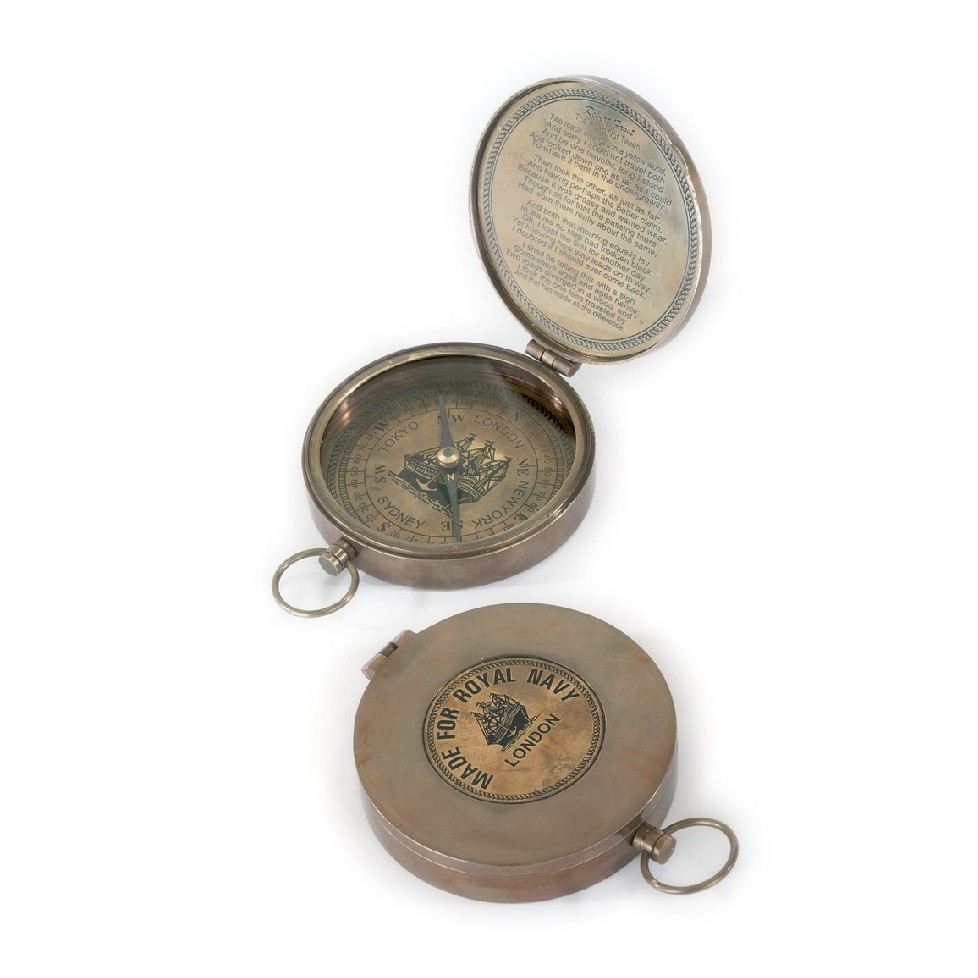



Antiqued brass compass.
The compass (from the Latin "passus" ("step")) opened up the world to exploration and discovery. The principle of the magnetic needle was already known to the Chinese in the 3rd century BC and was first used by feng shui priests to tell them where and how to build. It was adapted to maritime navigation by Chinese sailors around the year 1000. The first compasses comprised a magnetic needle floating in a bowl of water, with the needle suspended on a thread or threaded through a reed. The Arabs perfected this by mounting the needle on a pivot. The compass arrived in Europe between the 10th and 11th centuries, enabling sailers to cross the oceans and explorers to discover the continents. The first instrument to resemble the modern compass is attributed to Portuguese citizen .
SHIP'S WHEEL CLOCK. Nautical clock with international flags that decorate the dial, made in brass.
High-precision moonphase watch from the prestigious IMEX Marine brand. Clear acrylic frame. Made in Spain. 1 year warranty. 13.6x136x3 cm.
IMEX Marine tide indicator, a great benchmark in quality measurement devices. With a single glance, this elegant tide indicator IMEX Marine offers you the level of the tides throughout the year.
This elegant IMEX Marine clock is made with polished brass.
Reproduction antiqued brass compass with lovely rose and lid to protect the glass. Comes with attractive leather case.
Small marine table bell made of polished and varnished solid brass.